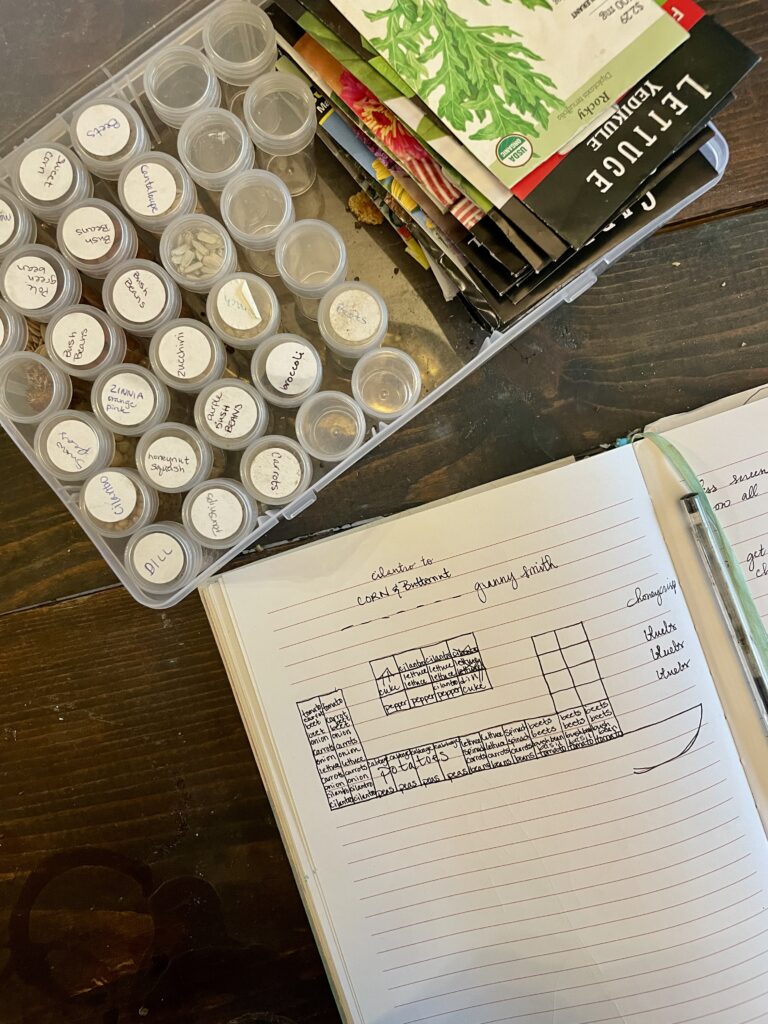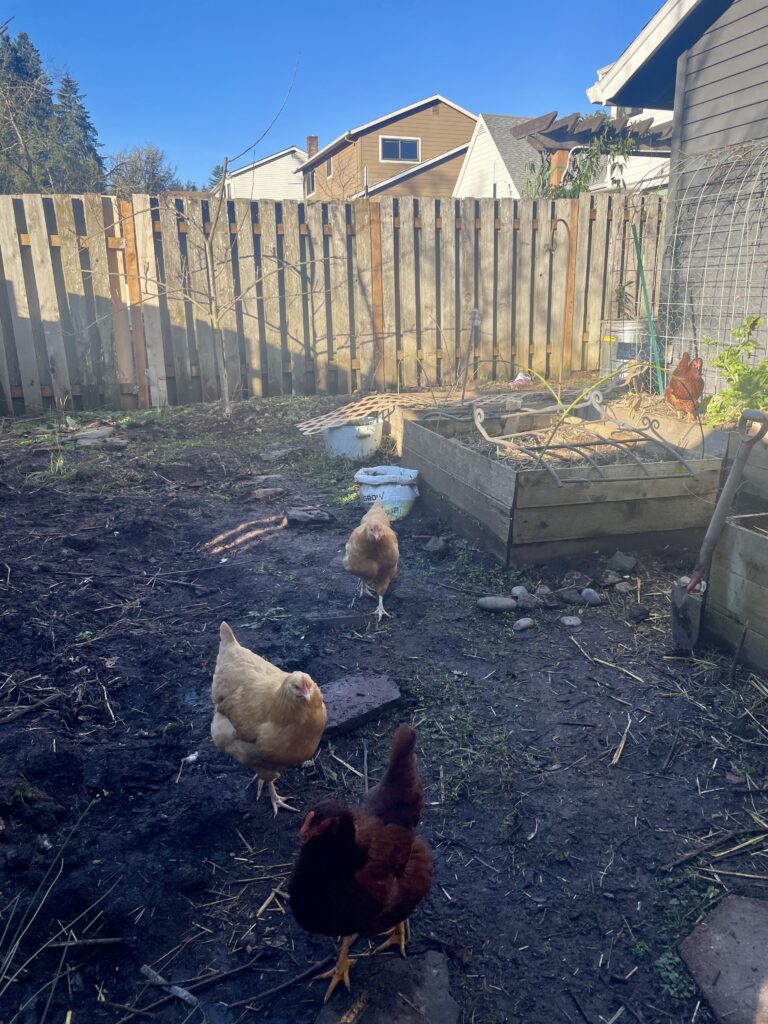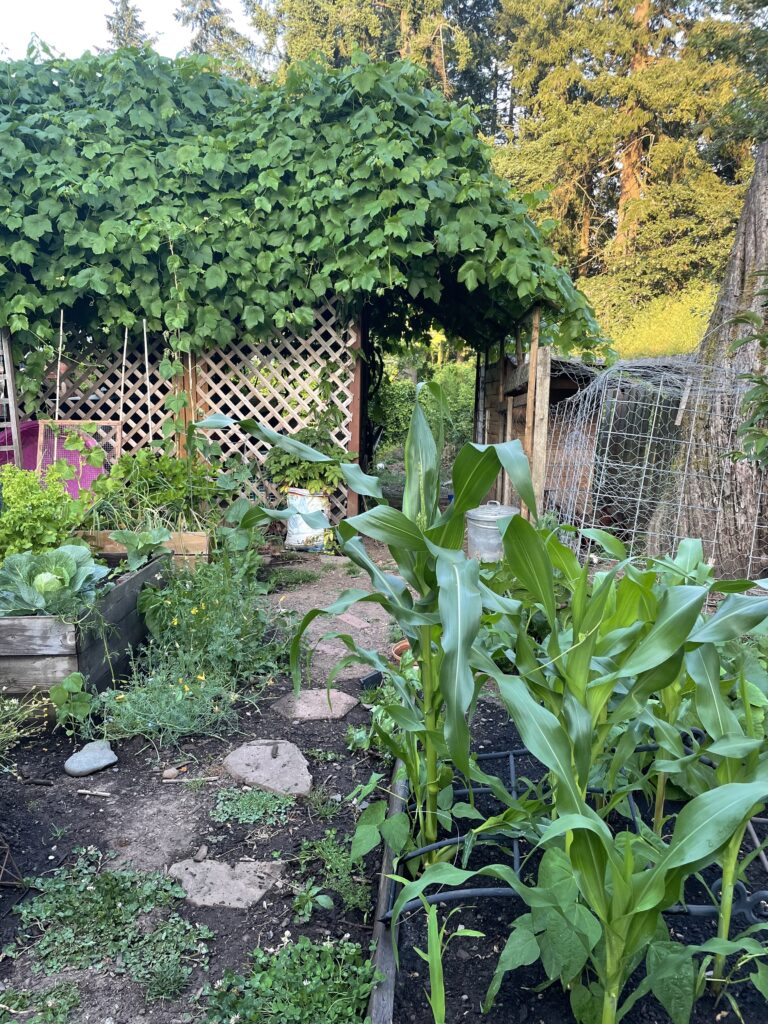Happy New Year! We made it to 2025. I love the New Year, I love planning and making goals. However, I often don’t set these plans / goals in motion until spring. I firmly believe winter is a time for planning and recouping. That’s why this winter I’m focusing on how to start a garden once Spring arrives.

How to Start a Garden
1. Make a Plan
With new goals in the garden comes lots of planning and drafting. We added chickens back into the backyard homestead last year. I’m not one who can keep animals in a pen, so I have to figure out how to start garden and keep it safe from my free ranging gals. So, like most years, this year involves rearranging my garden boxes.
Ask yourself some questions to make this step a little easier.
-
What do you want to grow?
This year I want to grow a lot of tomatoes. I also need to replenish pickles and jam, so cucumbers and berries are a must. We have a small raspberry patch that produces wonderfully every year, and some smaller blueberry bushes. I haven’t had great luck with corn, but I’m determined this year to harvest some pints of corn to use over the winter.
-
What do you eat a lot of that you could grow?
These winter days are spent going through the pantry making notes of what we buy, and what I could grow or make instead. For instance, I haven’t bought pickles or jam in years. I hope to add to the list this year, specifically with tomato products. Therefore, a large part of the garden will be dedicated to tomatoes!
-
How much space do you have?
While I don’t have acres and acres to garden on I do have great success growing a wide variety and plenty of veggies in our backyard. Our main garden space is less than 500 square feet and includes 2 apple trees and four blueberry bushes. I make good use of the remaining space with my garden boxes, growing vertically, and using square foot gardening methods throughout. If you have limited space consider container gardening! This is something I use on our deck to maximize the space and take advantage of the full sun.
-
What gardening zone do you live in?
We live in zone 8b/9a so we have a wonderfully long growing season. As I mentioned last year I really wanted to keep some of the garden going through the winter. Unfortunately for the garden, God and our chickens had other plans. The fall months were filled with exhaustion and morning sickness (surprise! Baby no. 3 is on the way), and the free ranging hens ate all of the seedlings they could find. Maybe next year!
-
How much sun do you get in the area that you wish to start a garden?
The main area of our garden gets nearly all day sun. We have a pergola covered in grapes on the eastern side that shades part of the garden in the morning, but gets plenty of sun in the afternoon. This can prove to be tricky when you’re trying to keep cooler weather plants alive. Sun mapping your garden space is a good idea to determine where you want to plant each thing.

2. Order Your Seeds
So many plants are easy, and better, to start from seed. This is so much cheaper than going to a garden center in the spring and buying starts. This year after planning what I will be growing I went through my seeds to determine what I needed. I placed an order with my favorite seed company, Baker Creek Heirloom Seeds for some corn, tomatoes, onion seeds, pumpkins, celery and tatsoi. Once those arrive I’ll start my onion seeds. According to Farmers Almanac onion seeds can be started inside for my zone in January! There are actually quite a few seeds you can start indoors while the ground is frozen that will be ready to transplant in the spring.
3. Research Companion & Succession Planting
This step helps me so much when drawing up the plans for the garden. I look at a chart with companion plants and plan to plant them together. There are also plants that don’t do well together so I try to space those out a bit as well! This really helps when you have limited space in the garden and really like to crowd things together. Plants that work well together won’t mind being close neighbors and may even benefit from the overcrowding!
Succession planting is also a must when you’re working with limited space. Planning out which plants can take over the spot when another is harvested will help you maximize your small gardening space. For instance, even though beans and garlic aren’t very friendly I’ve had good luck starting my bush beans just before the garlic harvest. Once the beans start filling out the garlic is ready to come out of the boxes!
4. Wait Patiently!
Probably the hardest part of gardening is the waiting. There’s a lot of it. Waiting to plant, waiting to harvest, waiting, waiting, waiting. But if you use this time to plan how to start a garden, you will surely benefit and your harvest will be bountiful later this year!


What do you think?